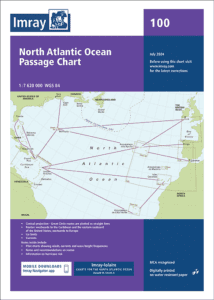# Mastering the Journey: Essential Tips for Sailing Across the Atlantic
Sailing across the Atlantic is a dream for many adventurers. The idea of crossing one of the world’s largest oceans on your own boat, powered only by wind and skill, is both exhilarating and challenging. Whether you’re an experienced sailor or someone preparing for their first long-haul voyage, there’s a lot to consider before you embark on this incredible journey. In this guide, we’ll share essential tips to help you master the art of sailing across the Atlantic and ensure that your adventure is both safe and enjoyable.
## Preparing Yourself and Your Crew for Sailing Across the Atlantic
One of the most important aspects of sailing across the Atlantic is preparation. This isn’t just about stocking up on food and water; it’s about mental and physical readiness too. Long ocean passages can be mentally taxing, so it’s crucial to have a well-prepared crew.
1. Training and Experience: Before setting sail, ensure that you and your crew have adequate sailing experience. Ideally, everyone on board should know how to handle basic tasks like steering, trimming sails, and responding to emergencies such as man-overboard situations.
2. Communication Skills: Open communication is key when you’re at sea for weeks at a time. Ensure that everyone onboard knows how to communicate effectively during stressful situations. Having pre-departure meetings where roles and responsibilities are clearly outlined can help avoid any confusion later.
3. Mental Preparedness: Being out at sea for extended periods can be mentally challenging due to isolation from land, unpredictable weather, and lack of immediate assistance. It’s important to prepare yourself mentally for these challenges by reading about others’ experiences or even taking shorter offshore trips first.
4. Plan your Route: Passage planning is a vital part of preparing for your adventure and Imray Chart 100: North Atlantic Ocean Passage Chart is a great starting point.
## Choosing the Right Time for Your Atlantic Crossing
Timing is everything when it comes to sailing across the Atlantic. The best time to cross depends largely on your route and whether you’re heading eastbound or westbound.
– Westbound (Europe to Caribbean): The ideal time for crossing from Europe (often starting from Spain or Portugal) to the Caribbean is between November and January. This period avoids hurricane season in the North Atlantic but still offers favorable trade winds.
– Eastbound (Caribbean to Europe): If you’re heading back from the Caribbean toward Europe, aim for May or June when conditions tend to be calmer.
Make sure you research weather patterns extensively before choosing your departure date. You’ll want to avoid hurricane season at all costs!
## Essential Gear for Sailing Across the Atlantic
Your boat will be your home for several weeks while crossing the Atlantic, so it’s crucial that it’s well-equipped with everything you need for a safe journey.
1. Safety Equipment: Life jackets, harnesses, EPIRBs (Emergency Position Indicating Radio Beacons), flares, fire extinguishers—these items should all be in top condition before departure.
2. Navigation Tools: While GPS systems have made navigation easier than ever before, having backup options like paper charts and a sextant can give you peace of mind in case of electronic failure.
3. Watermaker: Freshwater can be hard to come by in the middle of the ocean! A watermaker allows you to convert seawater into drinkable water—a must-have for long-distance sailors.
4. Spare Parts & Tools: Anything that can break probably will during an ocean crossing! Carry spare parts for essential equipment like sails, rigging, engine components, and tools needed for repairs.
## Staying Safe While Sailing Across the Atlantic
Safety should always be your number one priority when embarking on any long-distance sailing trip.
– Weather Monitoring: Regularly check weather forecasts through satellite communication devices or SSB radios while at sea. Storms can develop quickly in the open ocean, so staying informed about changing conditions is vital.
– Watchkeeping: Establish a watch schedule where someone is always awake and monitoring both navigation instruments and surroundings—especially at night when visibility is reduced.
– Man Overboard Drills: Practice man-overboard drills before leaving port so everyone knows exactly what to do if someone falls overboard during rough seas or bad weather.
– Ensuring your Admiralty or Imray Charts are corrected and uptodate.
## Enjoying Life Onboard During Your Crossing
While there’s plenty of hard sailing involved in an Atlantic crossing, don’t forget that this journey should also be fun! Here’s how you can make life onboard more enjoyable:
1. Entertainment: Bring books, music playlists (with offline access), podcasts or even movies downloaded onto tablets—it helps pass time during calm days.
2. Fishing Gear: Many sailors enjoy fishing while crossing oceans—fresh fish can add variety to your meals!
3. Cooking Adventures: Get creative with meal planning! Pre-cook some meals before departure but also leave room for experimenting with new recipes onboard using non-perishable ingredients.
—
Sailing across the Atlantic is an unforgettable experience filled with moments of awe-inspiring beauty—and yes—a few challenges along the way too! With proper preparation, attention to safety protocols, careful timing regarding weather patterns—and perhaps most importantly—a positive mindset—you’ll find yourself mastering this incredible journey with confidence!
Are you ready? With Imray Charts, the open ocean awaits!
Fair winds!


